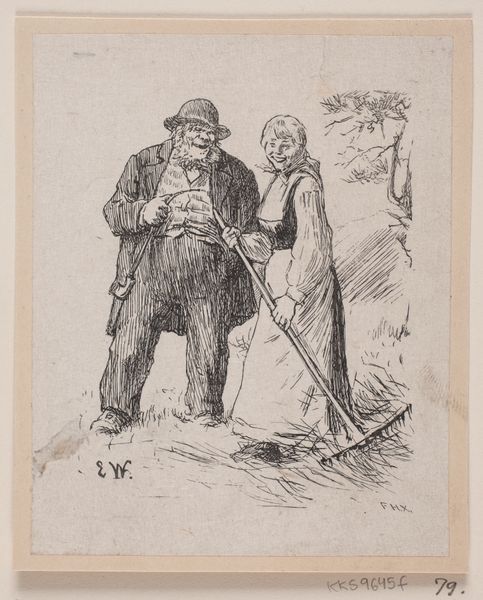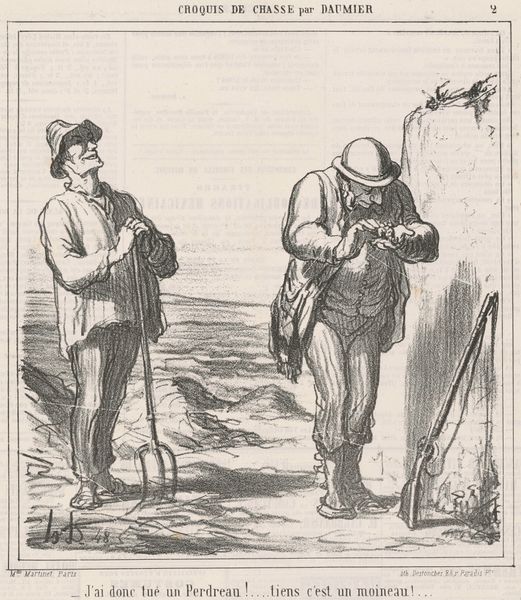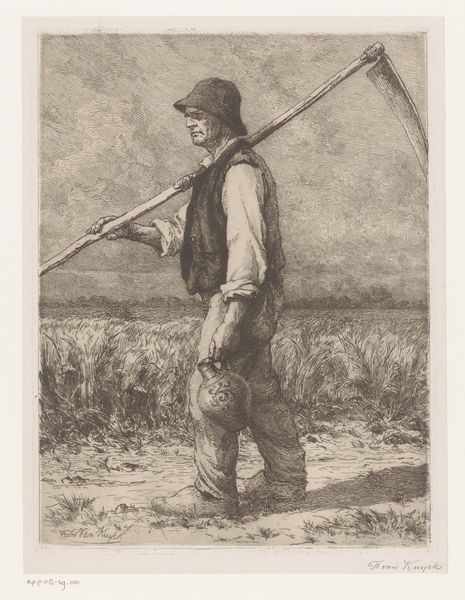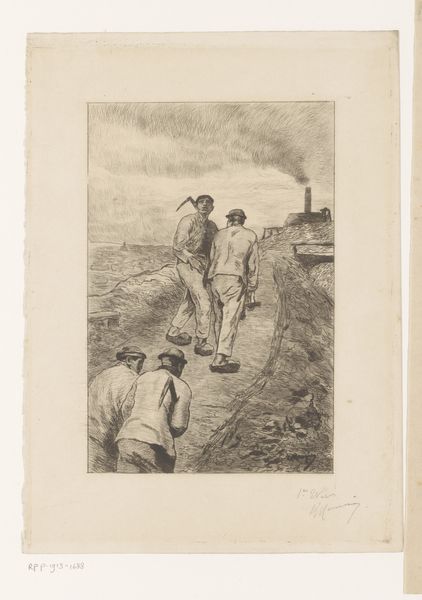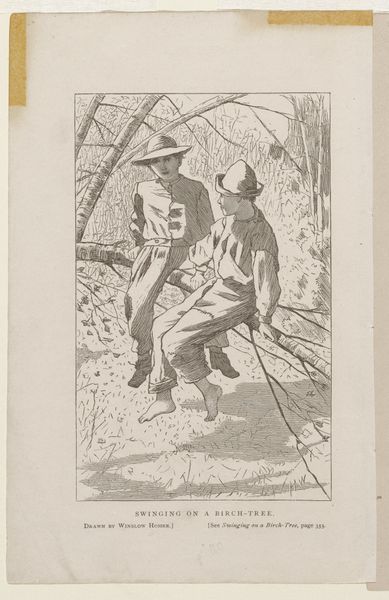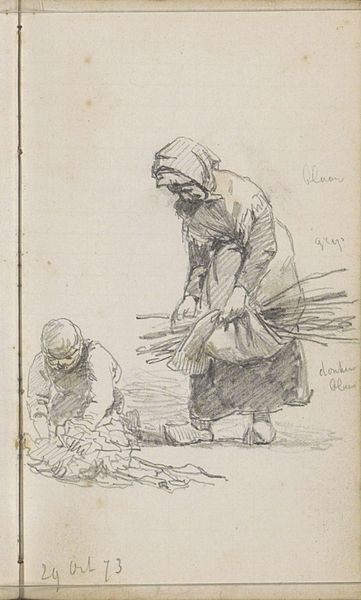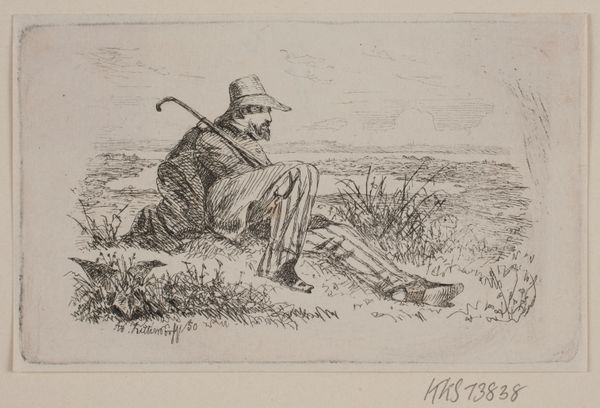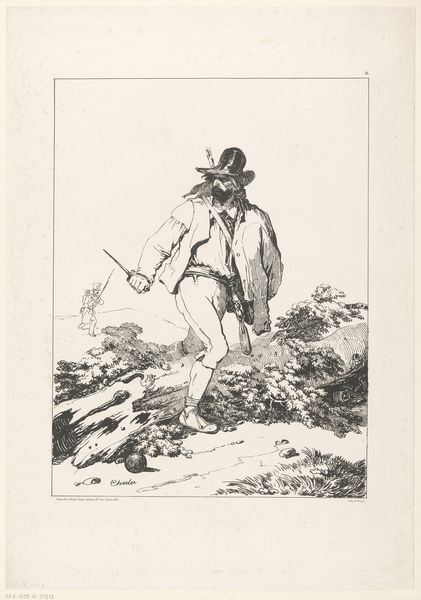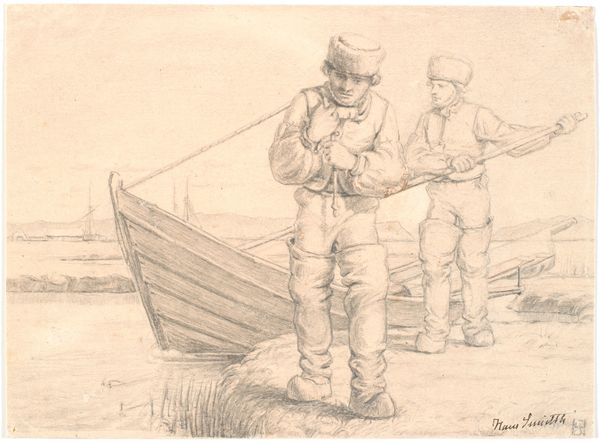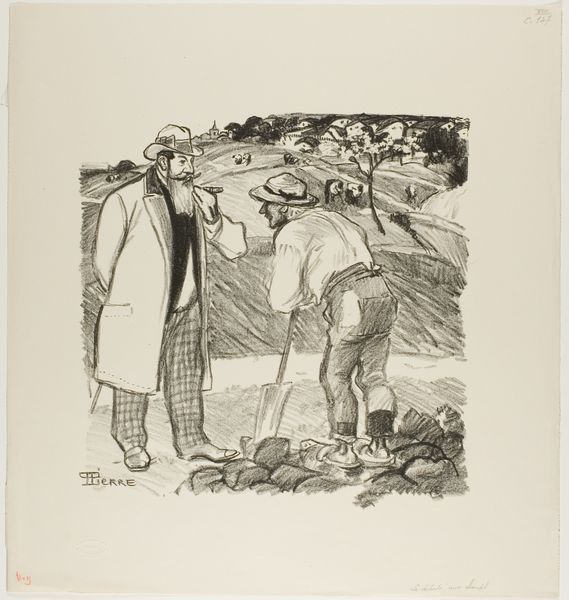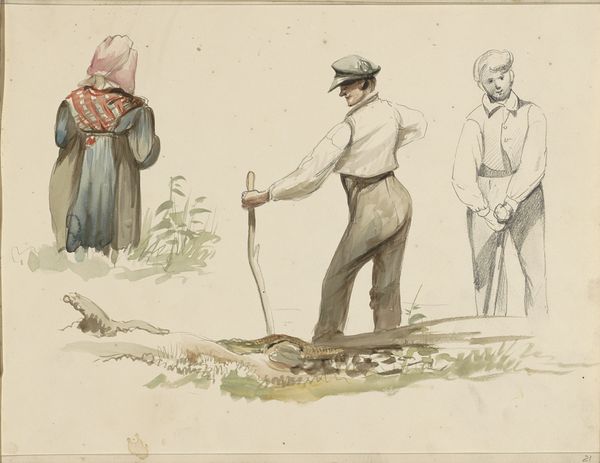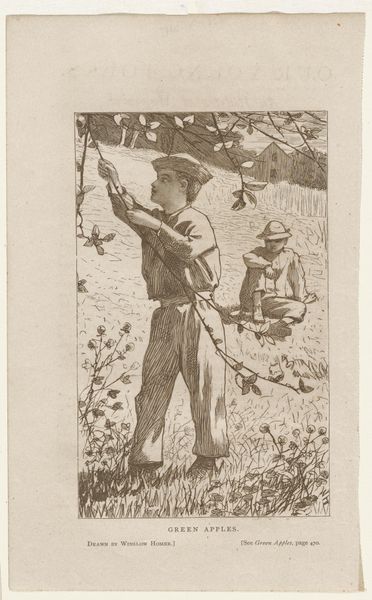
drawing, print, etching
#
drawing
# print
#
etching
#
landscape
#
figuration
#
genre-painting
#
realism
Dimensions: 130 mm (height) x 87 mm (width) (billedmaal)
Curator: Looking at this print, "Illustration til Holger Drachmann, \"Juli,\"" created around 1880 by an unknown artist, one immediately senses the rural setting, captured in delicate etching. It belongs to the collection of the SMK, Statens Museum for Kunst. Editor: My first impression is the sheer physicality of labor etched into the scene. The composition is so stark, black and white contrasts giving it this almost documentary-like feeling. I wonder what sort of commentary the artist intended by placing so much emphasis on their work. Curator: The cultural symbolism is quite interesting to observe in such scenes. Holger Drachmann was a notable figure, and the specific choice of "Juli," July, hints at themes linked to summer's labor, ideas of fruition. You almost imagine, perhaps, Drachmann celebrating the working-class with nostalgia in mind, finding simple virtues to set an example in his writing. Editor: Exactly. Look at these two figures, likely farmhands scything hay. I want to examine the societal undercurrent. Considering the period, late 19th century, we’re in the thick of the Industrial Revolution. Could this image serve as a political commentary, even a lament for the disappearing agrarian lifestyle amidst urbanization? Curator: The etching technique adds a historical quality—each line seems intentional, contributing to an aura of enduring rural practices, despite new technologies rising during the time. In regards to labor and symbolism, this would've been a way of paying respect. Editor: That's a valid reading. It is not about nostalgia but recognizing the value of manual work during enormous societal shift. Curator: The choice of material is significant, etching is a meticulous printmaking method—almost as if, with that careful process, the artist paid close attention to these individual workers whose stories must've gone unheard in this transitional time. Editor: It makes me contemplate how this portrayal impacts representations of laborers, their identities—often overlooked, particularly considering intersectional perspectives relating to class. Curator: Reflecting on the art, I realize how deeply entrenched images become in solidifying narratives over generations. These depictions can spark dialogues and provide frameworks through which viewers see history. Editor: Precisely. It reveals how images function in preserving stories. Looking closely allows the dialogue to exist within and outside of the boundaries of our current day.
Comments
No comments
Be the first to comment and join the conversation on the ultimate creative platform.
